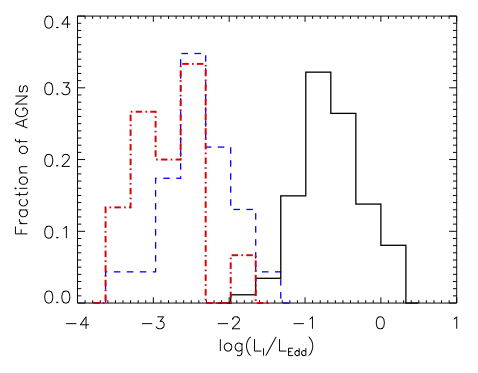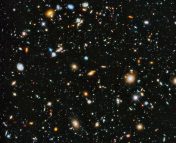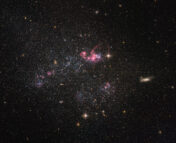Title: Host Galaxy Properties of Changing-look AGN Revealed in the MaNGA Survey
Authors: Xiaoling Yu, Yong Shi, Yanmei Chen, Jianhang Chen, Songlin Li, Longji Bing, Junqiang Ge, Rogemar A. Riffel, Rogério Riffel
First Author’s Institution: School of Astronomy and Space Science, Nanjing University, Nanjing 210093, China and Key Laboratory of Modern Astronomy and Astrophysics (Nanjing University), Ministry of Education, Nanjing 210093, China
Status: Accepted to the Monthly Notices of the Royal Astronomical Society, open access on arXiv
The Dangers of Typecasting
Of all the galaxies in the universe, only a small fraction are active, meaning that they have a source of energy that is not related to stellar processes. The centers of these active galaxies are known as active galactic nuclei (AGN) and are powered by the accretion of gas onto a supermassive black hole (SMBH). AGN are fundamentally multi-wavelength objects, emitting light over the entire electromagnetic spectrum. They are commonly classified according to their optical emission.
AGN are classified as Type 1 or Type 2 based on the width of spectral lines in their optical spectrum. Type 1 AGN have both narrow and broad emission lines. Broad lines are created by Doppler shifts due to gas orbiting close to the central SMBH in the broad line region (BLR). For Type 2 AGN though, only narrow emission lines are seen. The canonical AGN unification model suggests that this is due to a dusty torus blocking our view of the BLR.
There is a small subset of objects, known as changing-look AGN (CL-AGN), that change from Type 1 to Type 2 or vice versa. In recent years the number of new CL-AGN discoveries has increased due to expanded spectroscopic surveys. Some proposed explanations include changing obscuration of the BLR, variable accretion onto the SMBH, or even tidal disruption events where a star is ripped apart and accretes onto the SMBH. Whatever the cause, CL-AGN provide a unique insight into the complexities of AGN activity. In today’s paper, the authors use integral field spectroscopy from MaNGA to study the host galaxies of these CL-AGN to understand what role (if any) their environment plays.
Caught in the Act
To select their sources, the authors make initial cuts to select only MaNGA objects with strong Hα emission (to eliminate “fake AGN”; see Fig. 3 of this astrobite), sufficient signal-to-noise ratios (for strong detections), and line ratios classified as AGN in the BPT diagram. To select only CL-AGN, the authors examine objects with both an SDSS DR7 and MaNGA spectrum by eye for significant variations in Hα or Hβ line widths. For the objects with significant changes, the authors first subtracted the stellar component of the spectrum and then measured the line width by fitting a single Gaussian to the spectral line. If the width was less than 500 km/s the feature was considered a narrow line. If the simple model did not fit, a second Gaussian was added. If this fit the line profile and the line width was greater than 2000 km/s the line was classified as broad. If an object’s lines changed from narrow to broad or broad to narrow it was classified as a CL-AGN. This yielded 5 objects, which are 0.11% of the starting sample. Figure 1 shows an example of two spectra for a CL-AGN.
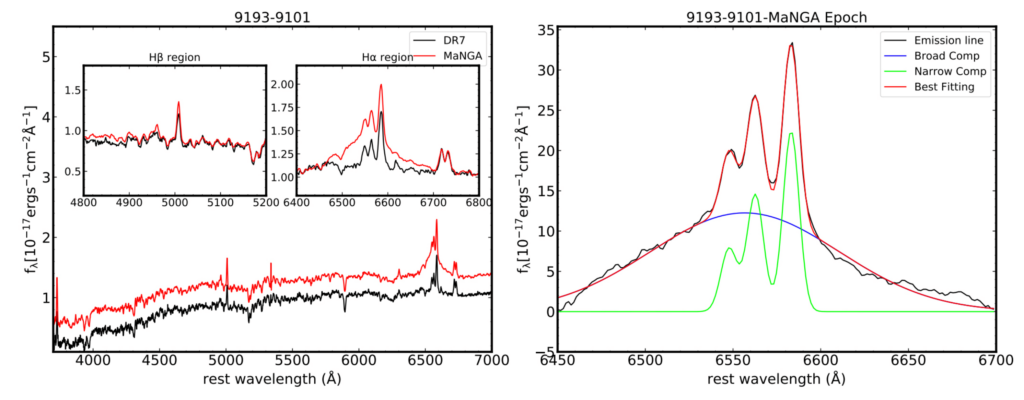
A Product of Environment?
To understand the role of host properties on changing look activity, the authors first study the kinematics of the CL-AGN host galaxies by measuring the velocity of stars and gas. They find one of the CL-AGN to be counter-rotating, meaning that the stars and gas rotate in different directions. This fraction of 20% ± 16% is higher than the fraction in normal star forming galaxies (1.84% ± 0.61%), although they note that this finding is not statistically significant.
Next, the authors look at bulk properties of the host galaxies such as star formation rate (SFR), axis ratio, and possible merger history. They compare these properties for CL-AGN hosts to non CL-AGN hosts in Figure 2. Combining UV, optical, and infrared data, the authors use stellar modeling to calculate SFR and stellar mass for the host galaxies, finding CL-AGN hosts to be similar to other galaxies (left panel of Fig. 2). By measuring the fluxes and velocities at different radii, the authors calculate the galaxy’s angular momentum and ellipticity (see middle panel of Fig. 2). These results imply that two of the CL-AGN have gone through gas-rich mergers. The authors also measure the axis ratio of CL-AGN, finding them to be predominantly face-on (see right panel of Fig. 2), potentially indicating that galaxy obscuration may hide changing-look activity in edge-on galaxies.

Finally, the authors compare host galaxy bulge properties. They point out that CL-AGN provide a unique test of the M-σ relation since during one state there are broad lines to measure the SMBH mass and in the other state, stellar velocity dispersion can be cleanly measured. As can be seen in Figure 3, the CL-AGN fit well on the M-σ relation with other AGN.
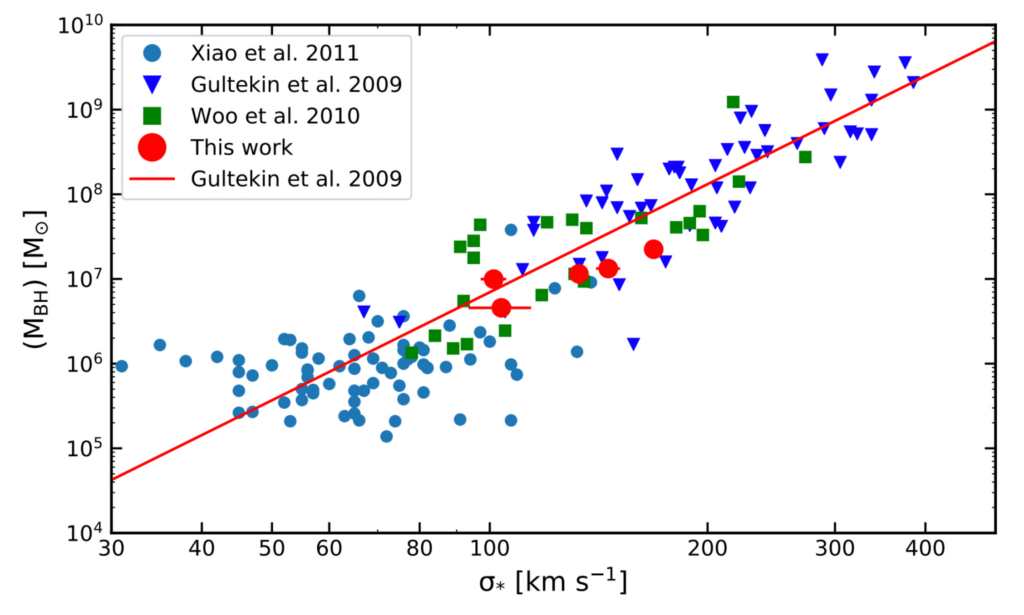
While making definitive conclusions with 5 objects is difficult, the authors have shown that changing look phenomena may be affected by host galaxy properties. Continued photometric and spectroscopic surveys to monitor the sky over multi-year timescales will add to our sample of CL-AGN. From this, continued studies of their properties will help us understand the complexity of AGN activity and SMBH growth and evolution.

